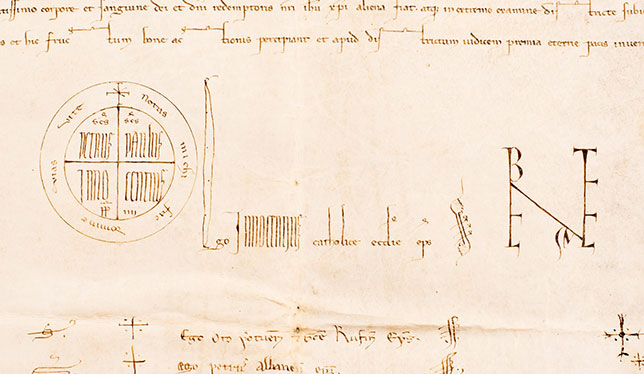
Students nowadays have access to digitized versions of many important archival documents, but the University of British Columbia’s Richard Pollard thinks there’s no substitute for experiencing the real thing. “Anything electronic is ephemeral in students’ minds,” says the adjunct professor of history. “It doesn’t make an impact. It’s just another picture.”
That’s why he urged the UBC Library to add to its collection by acquiring a nearly 800-year-old Papal document from an antiquarian book seller in London. “I noticed when I first started working here that there was little in the library’s’ collection in terms of medieval material,” he says.
A committee was struck and agreed to acquire the document, a Papal bull written in 1245, for approximately $15,000 last May. A Papal bull is an official decree issued by the Pope, in this case by Pope Innocent IV to the Italian convent of San Michele in Trento.
At the time, the papacy was in the midst of a power struggle with the Holy Roman Emperor, Frederick II, who was “trying to get control over northern Italy and had been interfering with all the monasteries and bishoprics,” Dr. Pollard explains. “So this document was essentially saying to this monastery, ‘we will protect your rights against anybody who is going to infringe on your property’ and so forth.”
For undergraduate students in history, such a document provides “a very tangible, emotional connection with the medieval world,” says Dr. Pollard. “The political and religious history of the 13th century was a very fundamental time in Europe. This was a time when the papacy is at the peak of its power in all of history.”
The parchment is also a good teaching tool for students to learn how to handle such documents in their research, says Dr. Pollard. The papal bull is written on sheep or calf’s skin and is in good condition, he notes. “As long as it doesn’t dry out, it’s pretty durable.”